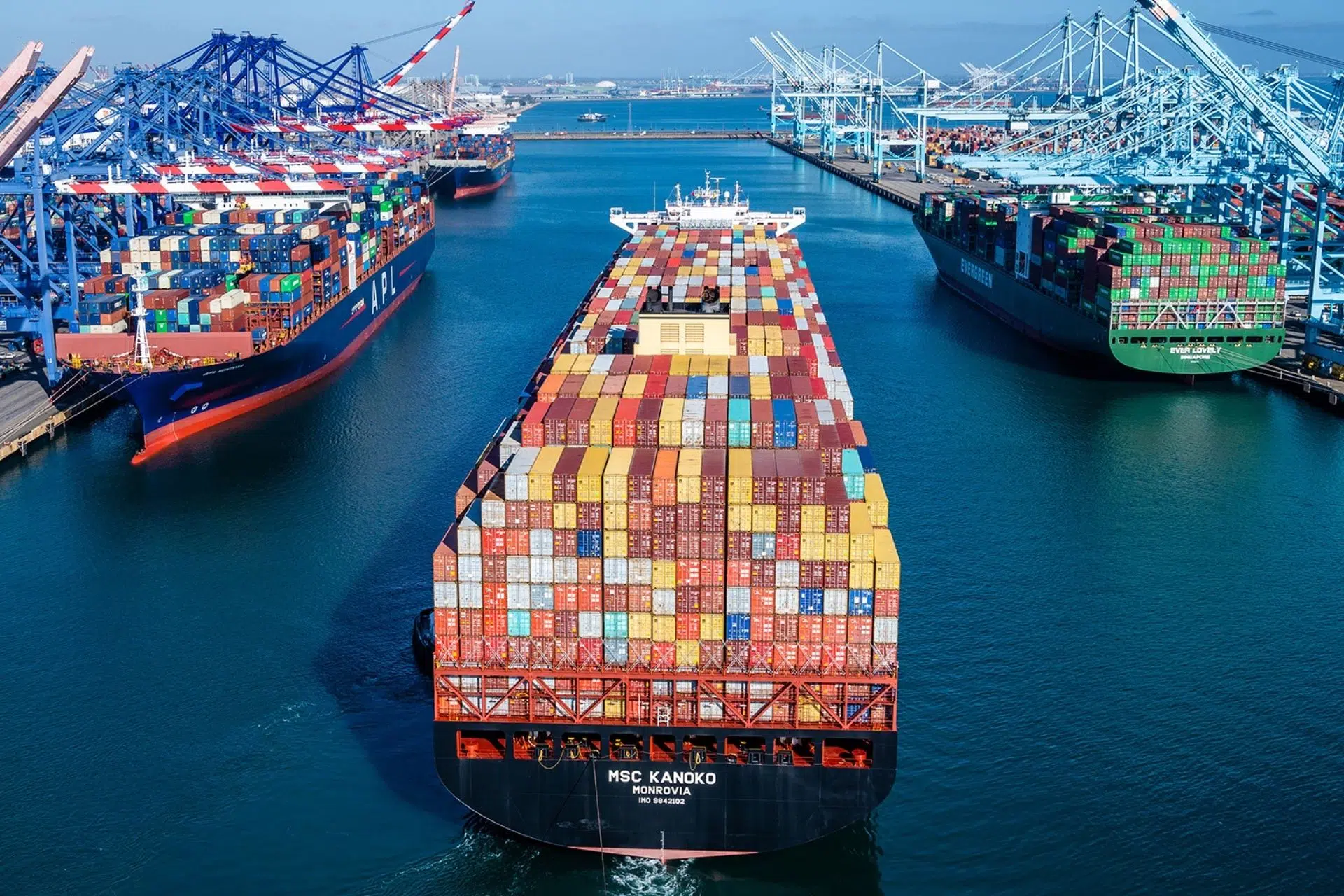According to the monthly Global Port Tracker report from the National Retail Federation and Hackett Associates, imports at the major container ports serving the United States will likely reach their lowest level in nearly two years by 2022’s end even though retail sales continue to gain.
U.S. ports covered by Global Port Tracker handled 2.26 million Twenty-Foot Equivalent Units, one 20-foot container or its equivalent, in August, the latest month for which final numbers are out. The figure was up 3.5% from July but down 0.4% from August 2021.
Although ports haven’t yet reported September numbers, Global Port Tracker projected the month at 2.07 million TEU, down 3% year over year. The October forecast is for 2 million TEU, down 9.4% year over year, November for 2.01 million TEU, down 4.9% year over year, and December for 1.96 million TEU, down 6.1% year over year. The December import number would be the lowest since 1.87 million TEU in February 2021, which was the last time the monthly total fell short of 2 million TEU.
Import for the first half of 2022 totaled 13.5 million TEU, a 5.5% increase year over year. The forecast for the rest of 2022 would see the second half at 12.5 million TEU, down 4% year over year. For the full year, 2022 should reach a total of 26 million TEU, up 0.7% from last year’s annual record of 25.8 million TEU.
Global Tracker expects imports to bounce back briefly in January 2023, which is forecast at 2.06 million TEU, but that figure still is down 4.9% from the year-earlier month. February is forecast at 1.8 million TEU, down 15% year over year as the month returns to its usual slowdown because of Lunar New Year factory shutdowns each year across Asia. Numbers remained high despite the holiday last year because of the container ship backup that kept congested ports busy during the month.
NRF forecasts that 2022 retail sales will grow between 6% and 8% over 2021, pointing out that sales advanced 7.5% during the first eight months of the year.
“The holiday season has already started for some shoppers and, thanks to pre-planning, retailers have plenty of merchandise on hand to meet demand,” NRF vp for supply chain and customs policy Jonathan Gold said in announcing the import numbers. “Many retailers brought in merchandise early this year to beat rising inflation and ongoing supply chain disruption issues. Despite the lower volumes, retailers are still experiencing challenges along the supply chain, including U.S. ports and intermodal rail yards.”
Hackett Associates Founder Ben Hackett said, “The growth in U.S. import volume has run out of steam, especially for cargo from Asia. Recent cuts in carriers’ shipping capacity reflect falling demand for merchandise from well-stocked retailers even as consumers continue to spend. Meanwhile, the closure of factories during China’s October Golden Week holiday along with the Chinese government’s continuing Zero Covid policy have impacted production, reducing demand for shipping capacity from that side of the Pacific as well.”
Global Port Tracker provides historical data and forecasts for the U.S. ports of Los Angeles/Long Beach, Oakland, Seattle and Tacoma on the West Coast; New York/New Jersey, Port of Virginia, Charleston, Savannah, Port Everglades, Miami and Jacksonville on the East Coast, and Houston on the Gulf Coast.





